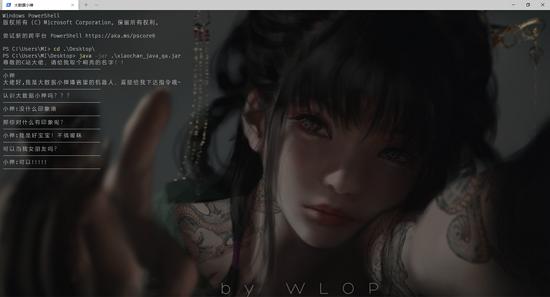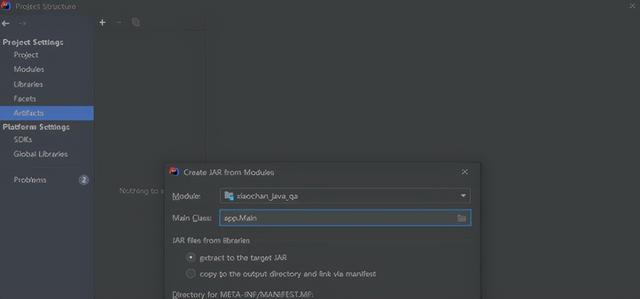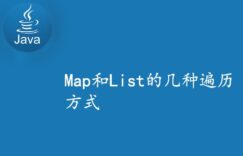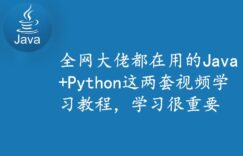最近有小伙伴留言,“很久没人找我聊天了,可以写一个陪聊机器人展现一下程序员的浪漫吗?”,“安排!”
1.智能陪聊机器人演示
人工智能 一直是最近的热点话题,自动人工智能但是以来应用领域就不断的扩大,在未来人工智能也会在人们的生活中不断普及与应用。这篇博文中的陪聊机器人,使用java进行编写,可以根据你发的信息进行智能的回应,还算挺有意思的一个小玩意。最终效果的演示如下图~

2.智能问答平台API介绍
这个陪聊机器人项目使用了青云课的智能API,通过调用API得到信息反馈。
具体的调用格式如下:
Msg =%s
其中的%s传入我们需要发送给机器人的内容,就可以得到API调用结果的反馈。 - key 固定参数 free
- appid 设置成0,为智能识别
- msg 为搜索关键词
- result 表示返回状态,返回0表示正常
- content api返回的信息内容
可以看到数据是以 Json 的形式进行返回。

3.整合第三方 JSON 开源库
Gson是 Google 提供的类库,可以用来处理java对象与JSON数据之间的映射,将一个JSON字符串转换成一个java对象,方便我们对API返回的JSON格式的数据进行处理,下面演示如何将Gson类库导入到我们的工程中。
首先可以去官网下载对应的jar包,或者直接私信我获取。获取jar包之后找个全英文路径进行保存。这里我们使用的编辑器是 IDEA ,所以使用IDEA进行演示,小伙伴们使用的是其他编辑器的话导入方法都是类似的哦。在IDEA打开如下界面,找到jar包导入即可。

4.智能机器人项目框架搭建与模块划分
项目搭建:搭建的部分无太多要求,只需要使用IDEA创建一个新的普通java工程即可
项目模块搭建:
- model 类 用来存放请求所返回的对象
- util 类用来存放工程所用到的工具类,比如说HTTP请求解析类
- app 类用来当作机器人项目的入口
- service 类用来实现业务的接口
相关的两个实体类如下:
public class Request {
private String key = "free";
private String appid = "0";
private String msg = "";
public Request(){
}
public Request(String msg){
this.msg = msg;
}
public String getKey() {
return key;
}
public void setKey(String key) {
this.key = key;
}
public String getAppid() {
return appid;
}
public void setAppid(String appid) {
this.appid = appid;
}
public String getMsg() {
return msg;
}
public void setMsg(String msg) {
this.msg = msg;
}
}
public class Response {
private int code;
private String content;
public int getCode() {
return code;
}
public void setCode(int code) {
this.code = code;
}
public String getContent() {
return content;
}
public void setContent(String content) {
this.content = content;
}
} 5.封装一个机器人HTTP工具类
HTTP工具类主要用来对api进行请求,获取返回的内容
public class HttpUtils {
public static String request(String api){
HttpURLConnection connection = null;
int responseCode = 0;
try{
URL url = new URL(api);
//获取对应的连接对象
connection = (HttpURLConnection) url.openConnection();
responseCode = connection.getResponseCode();
}catch ( Exception e){
e.printStackTrace();
}
if(200 <= responseCode && responseCode<=299){
try( InputStream inputStream = connection.getInputStream();
BufferedReader in = new BufferedReader(new InputStreamReader(inputStream));
){
StringBuilder response = new StringBuilder();
String currentLine;
while ((currentLine = in.readLine())!= null){
response.append(currentLine);
}
String result = response.toString();
return result;
}catch (Exception e){
e.printStackTrace();
}
}
return null;
}
} 6.实现机器人service层的接口与定义
实现机器人接口层
public interface RobotService {
Response qa(String msg) ;
} 实现机器人接口实现类,这个类用来实现API的请求,将结果进行封装成实体类返回
public class QkyRobotServiceImpl implements RobotService {
private static final String apiTpl = "#34;;
private static final Gson gson = new Gson();
@ Override
public Response qa(String msg) {
String api = null;
try {
api = String.format(apiTpl, URLEncoder.encode(msg," UTF -8") );
} catch (UnsupportedEncodingException e) {
e.printStackTrace();
}
String result = HttpUtils.request(api);
//可以做逻辑判断,比如null的时候,或者出错
Response response = gson.fromJson(result,Response.class);
return response;
}
} 7.制作专属于你的机器人入口
编写入口主类,调用封装好的模块进行机器人入口主类的编写
public class Main {
private static final RobotService robotService = new QkyRobotServiceImpl();
public static void main(String[] args)throws Exception {
Scanner scanner = new Scanner(System.in);
System.out.println("尊敬的C站大佬,请给我取个响亮的名字!!");
System.out.println("-------------------------------");
String name = scanner.nextLine();
System.out.println("大佬好,我是大数据小禅博客里的机器人,直接给我下达指令哦~");
System.out.println("-------------------------------");
while (true){
String input = scanner.nextLine();
if("88".equalsIgnoreCase(input)){
System.out.println("欢迎下次使用,拜拜");
break;
}else {
Response response = robotService.qa(input);
if(response != null && response.getCode() == 0){
System.out.println("-------------------------------");
System.out.println(name+":"+ new String(response.getContent().getBytes(),"UTF-8"));
System.out.println("-------------------------------");
}else {
System.out.println(name+": 大佬你刚刚这句话我没听懂,可否再陈述一次~");
}
}
}
scanner.close();
}
} 8.把你的机器人打包使用
为了方便我们对项目的使用,这里我们使用IDEA将项目打包成jar包。通过下面的步骤,就可以将我们项目里的全部模块与类库打包,需要调用的时候只需要使用 java -jar jar名字 即可。
首先点开IDEA的Project Structure之后找到Artifacts选项

点击Bulid,将项目进行打包

最后回产生一个out文件夹,这里面的jar包也就是我们打包后的最终结果。

之后上传到有java环境的终端就可以运行。

打包完成后我们的机器人项目就完成啦,希望小伙伴们通过这篇博文可以有所收获。


